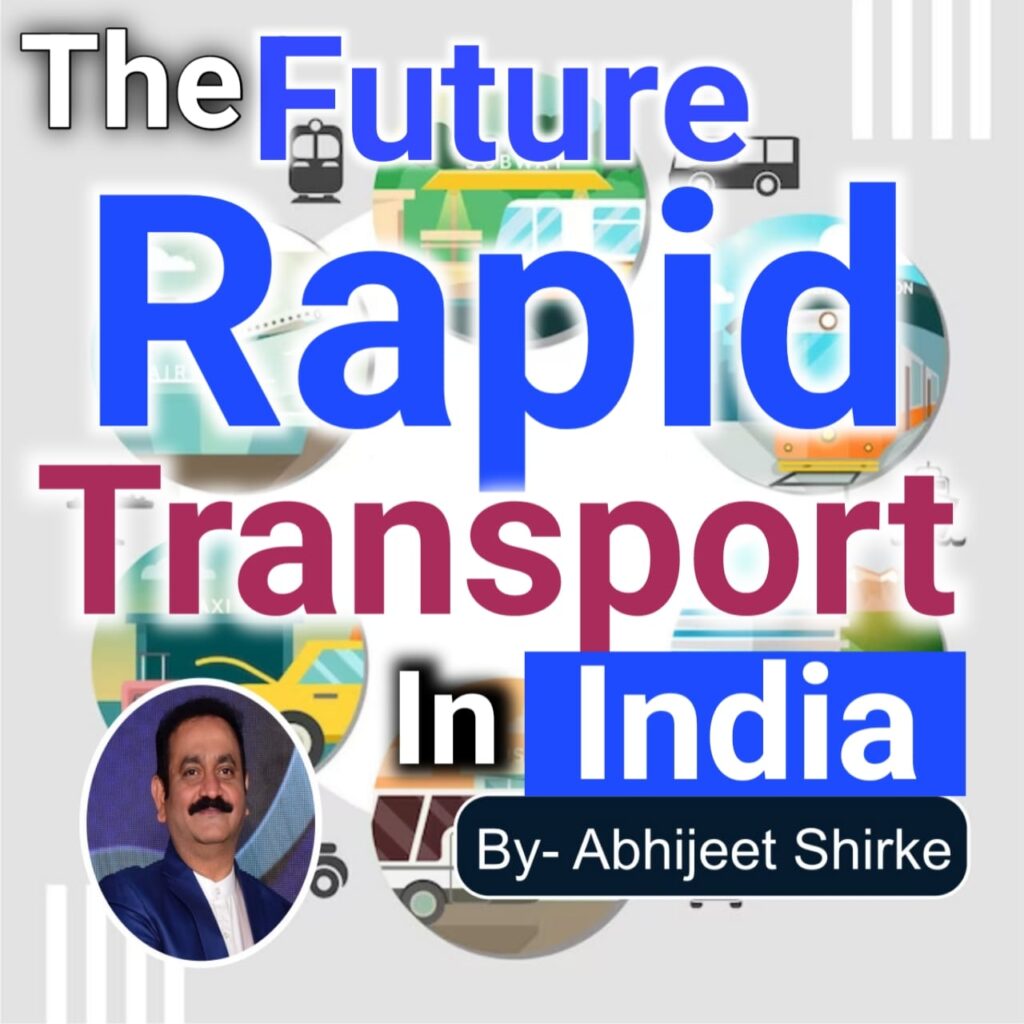
Future of Rapid Transport in India is poised to transform the urban transportation landscape in India. With its potential to address congestion, pollution, and accessibility challenges, PRT stands as a beacon of progress for the nation. This blog delves into the current state of PRT in India, emerging technologies, sustainable solutions, the need for infrastructure development, economic implications, and the path towards a developed nation.
Current Scenario
India’s urban centers are grappling with severe traffic congestion and air pollution. Conventional modes of public transport struggle to keep up with the growing population. Enter Public Rapid Transportation (PRT), a game-changer that promises efficient, comfortable, and eco-friendly mobility. As of now, PRT systems are being explored and piloted in select cities, showcasing their potential.
Embracing New Technology and Solutions:
The integration of cutting-edge technology, such as autonomous vehicles and AI driven traffic management systems, is at the core of PRT’s success. These systems enable real-time route optimization, enhanced safety measures, and reduced travel times. PRT’s innovative solutions promise to bridge the gap between demand and supply in urban transportation.
Infrastructure Development for a Growing Population:
With India’s ever-increasing urban population, investing in robust infrastructure is paramount. To cater to the needs of 4000 metro cities, a comprehensive network of PRT stations, tracks, and maintenance facilities is essential. It requires strategic urban planning, streamlined approval processes, and collaborative efforts between the government and private sectors.
Cost-Effective and Eco-Friendly Solutions:
One of the most compelling advantages of Public Rapid Transportation is its cost-effectiveness over traditional transit systems. PRT’s modular design allows for phased implementation, minimizing upfront expenses. Moreover, Public Rapid Transportation systems can be powered by renewable energy sources, reducing their carbon footprint and contributing to a greener environment.
Economic Implications and Job Creation:
The introduction of PRT can stimulate economic growth by generating millions of jobs across various sectors. From manufacturing and technology development to maintenance and operation, PRT systems offer a range of employment opportunities. This infusion of jobs can significantly boost local economies and contribute to a more prosperous nation.
The Government’s Role and the Path to Development:
To harness the full potential of PRT, the government must prioritize its implementation. Favorable policies, financial incentives, and partnerships with private entities can accelerate the adoption of PRT across the country. By addressing these issues on a priority basis, the government can set the stage for India’s transformation into a developed nation.
Public rapid transport presents a golden opportunity for India to reshape its urban mobility landscape. By embracing innovative technologies, prioritizing infrastructure development, and fostering sustainable solutions, PRT has the potential to propel India towards becoming a developed nation. With careful planning, collaboration, and a commitment to progress, India can revolutionize its public transportation and create a brighter future for its citizens.